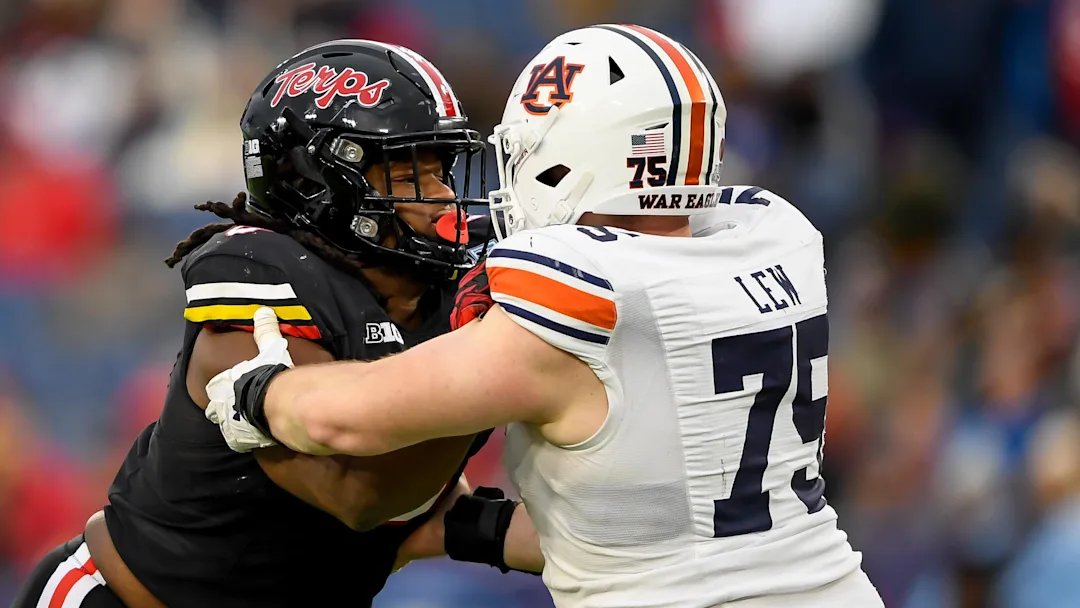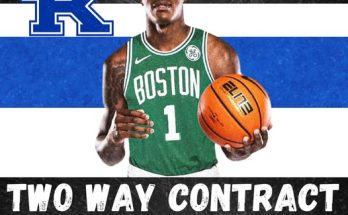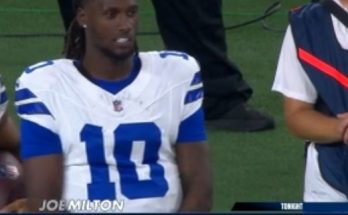Auburn football has always prided itself on physicality in the trenches, and now it seems the Tigers are finally getting the national recognition they’ve long sought on the offensive line. After seasons of inconsistency and rebuilding up front, Auburn’s offensive line is being ranked among the best in the Southeastern Conference heading into the 2025 season, a nod to both the recruiting success and developmental strides made under head coach Hugh Freeze and offensive line coach Jake Thornton. In a league where dominance at the line of scrimmage often separates the good from the great, Auburn’s rise in the offensive line rankings signals a potential shift in the Tigers’ overall competitiveness—not just in the SEC West, but across the national stage.
This improved perception didn’t happen overnight. Over the past two recruiting cycles, Auburn made significant investments in building a deeper, more physical offensive front. The results are beginning to take hold. The Tigers return a veteran unit anchored by experienced upperclassmen and infused with talented underclassmen pushing for snaps. It’s the kind of depth Auburn fans have not seen in years, and the kind of unit that can impose its will in critical SEC matchups.
One of the key players in Auburn’s offensive line resurgence is left tackle Dillon Wade, who transferred from Tulsa and immediately brought leadership and pass protection prowess to the Plains. After a strong 2024 campaign, Wade enters 2025 as a preseason All-SEC candidate and one of the most reliable blindside protectors in the conference. His combination of footwork, leverage, and football IQ gives Auburn a stable foundation on the edge—an asset that has been missing since the days of Greg Robinson. Wade’s decision to return for another season rather than declare for the NFL Draft has added continuity and veteran presence to a group that thrives on chemistry.
At left guard, veteran Jeremiah Wright brings brute strength and aggression. Wright, a converted defensive lineman, plays with a chip on his shoulder and has developed into one of Auburn’s most consistent interior blockers. His physicality in the run game and improved footwork in pass sets make him a crucial cog in the Tigers’ efforts to control the line of scrimmage. Alongside him, Avery Jones at center has become the glue of the unit. A former East Carolina standout who transferred to Auburn last year, Jones adjusted quickly to SEC speed and emerged as a vocal leader. His ability to read defensive fronts and make protection calls has freed up Auburn quarterbacks to focus more on pre-snap coverage reads, reducing pressure and improving execution across the board.
On the right side, Tate Johnson and Gunner Britton bring toughness and tenacity to every snap. Johnson, a returning starter, has added size and strength through the team’s offseason program, and his improved technique has caught the eye of NFL scouts. Britton, who transferred from Western Kentucky, has proven to be more than just a stopgap—he’s become a tone-setter with a relentless motor and willingness to finish plays through the whistle. Together, they’ve helped Auburn establish one of the most balanced offensive lines in the SEC, capable of both opening up rushing lanes and holding strong in pass protection.
Recruiting has played a significant role in this transformation. Freeze and his staff made the offensive line a priority, and it’s paid dividends. Blue-chip prospects like 5-star offensive tackle DeAndre Carter and 4-star guard Jamari Howard chose Auburn over perennial powers, a testament to the staff’s relentless pursuit of talent and their vision for what Auburn football can be. Carter, in particular, has drawn rave reviews in spring practices. Even as a true freshman, he’s pushing veterans for playing time and showcasing the elite athleticism that made him a top national recruit. His presence adds not only depth but future star power, ensuring the Tigers won’t face the kind of drop-off that plagued previous iterations of the offensive line.
What separates this Auburn offensive line from others in the past decade is its versatility. Several linemen are cross-trained to play multiple positions, giving the staff flexibility when injuries inevitably arise. The ability to rotate without a significant drop-off in performance is something championship-caliber teams possess. For example, Kameron Stutts and Connor Lew provide reliable depth at guard and center respectively, while redshirt freshman Tyler Johnson is emerging as a potential starter down the line at right tackle. It’s a unit that’s both deep and adaptable, something Auburn hasn’t been able to claim for years.
This offensive line’s rise is also reflected in analytics. According to several preseason metrics from outlets like Pro Football Focus and On3, Auburn ranks in the top three among SEC teams in returning offensive line production, adjusted line yards, and pass-blocking efficiency. That data backs up what coaches and players have seen in practice: this group can protect the quarterback and move the line of scrimmage. The Tigers’ offensive line surrendered fewer sacks and pressures than most SEC units last season, and expectations are even higher now with another year in the system under Thornton’s tutelage.
It’s also worth noting that the improvement up front has had a ripple effect on Auburn’s entire offense. The running game has flourished with backs like Jarquez Hunter finding more consistent holes to run through. Hunter rushed for over 1,000 yards in 2024 behind this line and is expected to do so again in 2025, largely due to the push and timing provided by his offensive linemen. Auburn’s red-zone efficiency has also ticked upward, with the Tigers converting a higher percentage of their goal-line opportunities thanks to improved blocking.
Quarterback play has benefited too. With more time in the pocket and cleaner protection, Auburn’s signal-callers have been able to step into throws, progress through reads, and avoid costly turnovers. Offensive coordinator Philip Montgomery has opened up the playbook knowing that the line can handle exotic blitzes and three-man stunts. Whether Auburn leans into a quick-strike RPO system or opts for more vertical shots downfield, it’s all possible because the offensive line is executing at a high level.
Perhaps most impressively, Auburn’s offensive line has earned praise from opposing coaches. During SEC Media Days and spring press conferences, multiple rival coaches mentioned Auburn’s physicality and improvement up front. It’s a subtle but telling sign of respect. In a conference where linemen are often the difference between winning nine games and five, the recognition speaks volumes.
The key now will be sustaining and building on this momentum. Auburn has the potential to finish the season as the best offensive line in the SEC, but that will require health, continued development, and a commitment to discipline in the trenches. Penalties, mental errors, and assignment breakdowns have plagued the Tigers in years past, but there’s a sense that this group has turned the corner. The leadership from veterans like Wade and Jones, combined with the injection of young talent and strong coaching, gives Auburn a recipe for sustained success.
Looking ahead to the 2025 schedule, Auburn’s offensive line will be tested early and often. Matchups against Georgia, Alabama, and Texas will provide a litmus test for how far the unit has truly come. But if the Tigers are going to compete for an SEC title, it will be because the offensive line leads the way. Every championship-caliber team in this league is built from the inside out, and for the first time in a long while, Auburn seems to have the foundation necessary to make a real run.
In the end, the resurgence of the Auburn offensive line is more than just a storyline—it’s a reflection of the hard work, strategic recruiting, and player development that Freeze and his staff have prioritized since day one. It’s a testament to players who have bought in, grinded through offseason workouts, and committed to being the most physical unit on the field. And most of all, it’s a sign that Auburn football is beginning to look like Auburn football again. For a fanbase desperate to return to the upper tier of the SEC, that’s a very welcome sight.



